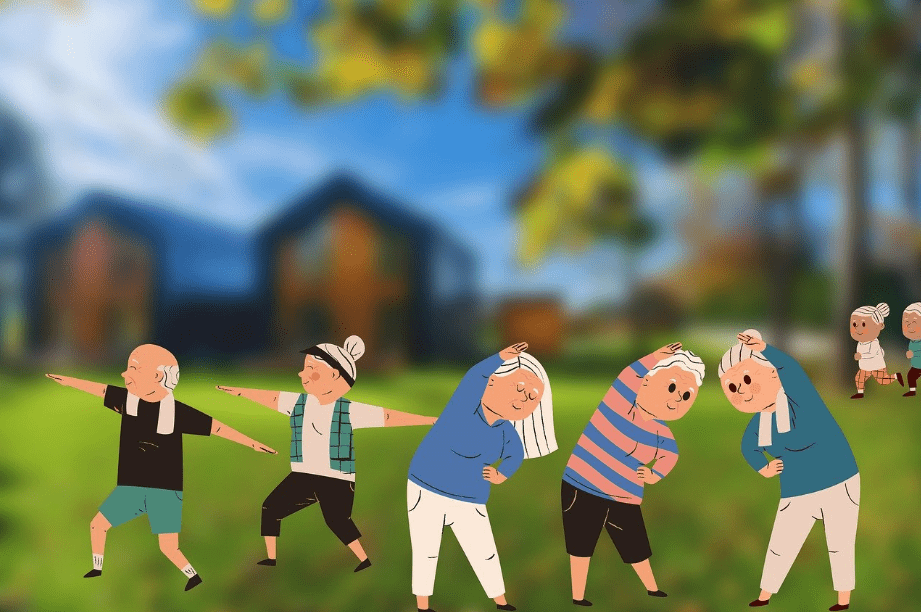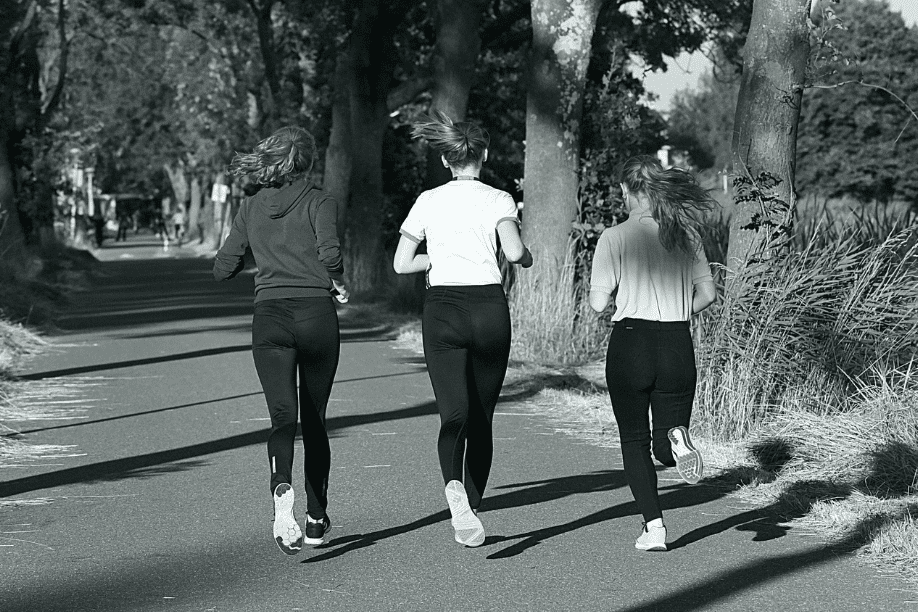Maintaining a healthy lifestyle has become increasingly challenging due to lifestyle changes and workplace modifications in the 21st century. Many adults are struggling with evolving barriers that prevent them from achieving healthy living, and more specifically, regular physical activity.
The truth is, there is more to be done at work to make ends meet. Likewise, sedentary work environments have become the norm.
And yet, adults of all ages must find ways to attain meaningful physical wellness. While at it, considerations must be put in place regarding how long, what time, and what kinds of physical activities are appropriate for different age groups.
Physical activity reduces mortality, prevents various cancers, musculoskeletal and cerebrovascular diseases, improves metabolism, and is beneficial for mental health.
NIH
Yes, one cornerstone to good health is regular physical activity. The other cornerstone elements include balanced nutrition, sufficient sleep, stress management, adequate hydration, meaningful social connections, regular health check-ups, and control of harmful habits.
Recommendations for Healthy Physical Wellness
Determining the recommended physical exercise schedule and timing for adults can be a challenging task. This is because a “one-size-fits-all” approach to physical activity doesn’t exist.
It is important to note that the recommended schedule and timing can vary based on individual preferences, fitness levels, and health conditions.
Here are some key points to consider when determining the best physical activity schedule and timing for you:
- Age: Different age groups have varying activity needs. Guidelines are available for children, adults, and older adults. Modifications may be necessary to accommodate reduced joint flexibility, muscle strength, and balance in older adults.
- Fitness level: Beginners should start slowly and gradually increase intensity and duration. Experienced individuals can handle more challenging routines.
- Health conditions: Certain conditions may require specific exercise modifications or limitations. Cardiovascular, musculoskeletal, respiratory, neurological, metabolic, orthopedic injuries, and pregnancy conditions are major health concerns that need expert advice. Consulting a healthcare professional is essential before starting a new program.
- Preferences: Choose activities you enjoy and find sustainable. This will increase the likelihood of you sticking with your routine.
- Timing: Find a time of day that works best for your schedule and energy levels. Consistency is more important than specific timing.
To guide individuals on their fitness journey, the World Health Organization (WHO) provides general recommendations for different age groups.
Typically, adults aged 18 to 64,
- should do at least 150–300 minutes of moderate-intensity aerobic physical activity;
- or at least 75–150 minutes of vigorous-intensity aerobic physical activity; or an equivalent combination of moderate- and vigorous-intensity activity throughout the week
Understanding these guidelines is essential for creating a balanced and effective exercise routine that aligns with one’s health goals.
Physical Activity for Adults of Different Ages:

1. Early Adulthood (18 – 30 years)
In this dynamic age bracket it is vital to focus on a blend of cardiovascular exercises and strength training. This schedule incorporates not only gym workouts but also outdoor activities to keep the routine engaging and diverse.
In brief, aim for 150 minutes of moderate-intensity aerobic activity per week, like brisk walking, dancing, or biking. Alternatively, go for 75 minutes of vigorous-intensity aerobic activity per week, like running, swimming, or HIIT workouts.
2. Midlife (31 – 50 years)
As responsibilities increase, finding time for physical activity becomes challenging. Still, the basic principles of physical activity remain similar to the 18-30 age group, with some important considerations: high-intensity workouts ensure that even the busiest individuals can maintain a healthy lifestyle.
3. Golden Years (51 – 64 years)
With advances in age, there is a need to emphasize low-impact exercises, flexibility training, and activities that promote joint health. It’s a tailored approach to cater to the specific needs of the older demographic.
All in all, start with a doctor’s consultation by discussing your health status, limitations, and goals to get personalized advice and exercise clearance.
In addition, focus on safe, low-impact activities like walking, swimming, cycling, yoga, Tai Chi, and light weightlifting. Listen to your body: Start slowly, and gradually increase intensity and duration. Also prioritize rest and recovery.
4. The Elderly (65 and above)
Like the age bracket before 65, there is a need to emphasize conscious physical exercise.
Aim for muscle-strengthening activity: Do muscle-strengthening activities that work all major muscle groups on at least 2 days a week.
Adapt exercises to your abilities and limitations. Don’t hesitate to ask for guidance from qualified professionals like physiotherapists or trainers. Also, choose activities you find fun and engaging. Join group classes or find an exercise buddy for motivation and social connection.
Balance exercises: Include balance exercises on most days of the week to help prevent falls.
Remember, even moderate amounts of regular activity can bring significant benefits. Don’t be discouraged by limitations, focus on what you can safely achieve, and enjoy the journey towards a healthier, happier you!
Best Time for Physical Activity for all Adults
Unfortunately, there’s no single “best” time for physical activity that applies to all adults. Different age groups have unique physical activity requirements. The ideal timing depends on individual factors such as chronotype:
- Morning people: These may perform better and feel more energized with morning workouts.
- Night owls: These might enjoy and stick with evening exercise routines.
Generally, there isn’t a one-size-fits-all answer, as the most important aspect is consistency. The key is to find a time that works best for you, and one that you can stick to regularly. Regular physical activity matters more than the specific time of day.
Nonetheless, here are some considerations for different times of the day:
- Morning:
- Pros: Exercising in the morning can help boost energy levels and kickstart your metabolism for the day. It may contribute to improved mood and mental focus throughout the day.
- Cons: Some individuals may find it challenging to muster the motivation for morning workouts.
- Afternoon/Evening:
- Pros: Body temperature and muscle function tend to be optimized in the afternoon, potentially leading to better physical performance. Additionally, the risk of injury may be lower compared to the early morning.
- Cons: Evening exercise might interfere with sleep for some people, so it’s advisable to complete workouts a few hours before bedtime.
Common Mistakes to Avoid
Overdoing physical exercise, also known as overtraining, can have negative consequences on physical and mental health. It is important to listen to your body and recognize signs of overstraining.
While enthusiasm for exercise is commendable, overstraining can lead to burnout and injuries.
Here are some indicators that you may be overdoing physical exercise:
Physical Signs:
- Prolonged muscle soreness: If your muscles remain sore and stiff for 3 or more days after a workout, it’s a sign of excessive stress.
- Decreased performance: Feeling weaker, slower, or more fatigued during workouts could indicate overtraining.
- Increased resting heart rate: A consistently elevated resting heart rate compared to your baseline can be a symptom of overexertion.
- Sleep disturbances: Difficulty falling asleep, staying asleep, or waking up feeling unrested can be linked to overtraining.
- Increased injuries: Frequent aches, pains, or injuries could suggest your body needs more rest and recovery.
- Decreased appetite or changes in weight: Loss of appetite or unexplained weight changes can be signs of hormonal imbalances caused by overtraining.
Mental and Emotional Signs:
- Decreased motivation and enjoyment of exercise: If you used to enjoy your workouts but now find them draining or unappealing, it could be a sign of overtraining.
- Irritability, mood swings, or anxiety: Excessive exercise can disrupt your emotional well-being and lead to mood changes.
- Trouble concentrating or focusing: Difficulty focusing or remembering things can be signs of mental fatigue related to overtraining.
- Increased stress and anxiety: If exercise becomes a source of stress rather than a stress reliever, it might be time to modify your routine.
- Social withdrawal: Neglecting social activities or isolating yourself due to excessive exercise commitment can be a red flag.
The Final Tips

Here are some tips adults can use for scheduling mindful physical activity:
- Start slowly and gradually increase the intensity and duration of your workouts.
- Warm up before each workout and cool down afterwards.
- Break it up: You don’t have to do all your activity at once. You can break it up into shorter bouts throughout the day. For example, you could do 30 minutes of brisk walking in the morning, 15 minutes of strength training at lunchtime, and 15 minutes of yoga in the evening.
- Stay hydrated by drinking plenty of water before, during, and after your workouts.
- Find a workout buddy or join a fitness class for motivation and support.
- Listen to your body: Take rest days when you need them, and don’t push yourself too hard.
- Find activities you enjoy: You’re more likely to stick with an activity if you enjoy it. Try different things until you find something you like.
- Most importantly, have fun!
NOTE: Importance of Social Exercise: Engaging in physical activity can be more enjoyable and sustainable when done with others. Choose people who share your fitness level and interests, and don’t be afraid to try different groups or activities until you find something you truly enjoy. Exercising with others can introduce you to new workout routines, exercises, or training techniques you might not have considered before.
Additional Resources You May Find Helpful:
- The Centers for Disease Control and Prevention (CDC): Physical Activity Guidelines for Americans
- The National Institute on Aging: Exercise and physical activity
- The American Heart Association: Recommendations for Physical Activity in Adults and Kids





Leave a Reply